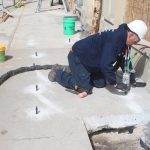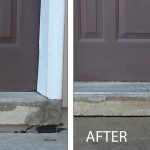Varieties:
– Tiling, flooring, resin, nonshrinking, and thixotropic grouts are common types.
– Enhancing admixtures improve cement-based materials’ quality.
– Tiling grout fills spaces between tiles, with sanded and unsanded varieties available.
– Structural grout is used in reinforced masonry to fill voids and secure reinforcing steel.
– Nonshrinking grout is placed beneath metal bearing plates for consistent bearing surfaces.
Tools and Treatments:
– Grout saw or scraper removes old grout, usually made of tungsten carbide.
– Grout float smooths grout lines, typically made of rubber or soft plastic.
– Grout sealer resists water, oil, and acid-based contaminants when applied over dried grout.
– Grout cleaner removes dirt and dust from grout lines.
– Die grinder is used for faster removal of old grout compared to a grout saw.
See Also:
– Mortar, mortar joint, caulk, thinset, and glue are related to grout.
– Mortar joint and caulk are alternatives to grout for different applications.
– Thinset is a type of adhesive mortar used for setting tiles.
– Glue is a versatile adhesive used in various applications.
References:
– Masonry Advisory Council distinguishes grout from mortar and concrete.
– “Masonry Design and Detailing for Architects, Engineers and Builders” by Christine Beall provides insights on grout.
– Home Reference offers guidance on selecting the right grout for projects.
– Research Gate discusses the influence of thixotropy on cement grout and concrete stability.
– Portland Cement Association’s PDF provides information on selecting and specifying mortar and grout for unit masonry.








Recent Comments